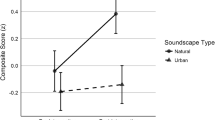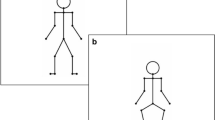Summary
In a probe-tone experiment, two groups of listeners — one trained, the other untrained, in traditional music theory — rated the goodness of fit of each of the 12 notes of the chromatic scale to four-voice harmonic sequences. Sequences were 12 simplified excerpts from Bach chorales, 4 nonmodulating, and 8 modulating. Modulations occurred either one or two steps in either the clockwise or the counterclockwise direction on the cycle of fifths. A consistent pattern of probe-tone ratings was obtained for each sequence, with no significant differences between listener groups. Two methods of analysis (Fourier analysis and regression analysis) revealed a directional asymmetry in the perceived key movement conveyed by modulating sequences. For a given modulation distance, modulations in the counterclockwise direction effected a clearer shift in tonal organization toward the final key than did clockwise modulations. The nature of the directional asymmetry was consistent with results reported for identification and rating of key change in the sequences (Thompson & Cuddy, 1989 a). Further, according to the multiple-regression analysis, probe-tone ratings did not merely reflect the distribution of tones in the sequence. Rather, ratings were sensitive to the temporal structure of the tonal organization in the sequence.
Similar content being viewed by others
References
Agmon, E. (1990). Music theory as cognitive science: Some conceptual and methodological issues.Music Perception, 7, 285–308.
Bharucha, J. J. (1984). Event hierarchies, tonal hierarchies, and assimilation: A reply to Deutsch and Dowling.Journal of Experimental Psychology: General, 113, 421–425.
Butler, D. (1989). Describing the perception of tonality in music: A critique of the tonal hierarchy theory and a proposal for a theory of intervallic rivalry.Music Perception, 6, 219–242.
Butler, D. (1990). Response to Carol Krumhansl.Music Perception, 7, 335–338.
Castellano, M. A., Bharucha, J. J., & Krumhansl, C. L. (1984). Tonal hierarchies in the music of North India.Journal of Experimental Psychology: General, 113, 394–412.
Cohen, A. J. (1991). Tonality and perception: Musical scales primed by excerpts fromThe Well-Tempered Clavier of J. S. Bach.Psychological Research/Psychologische Forschung, 53, 305–314.
Cuddy, L. L., & Badertscher, B. (1987). Recovery of the tonal hierarchy: Some comparisons across age and levels of musical experience.Perception & Psychophysics, 41, 609–620.
Hopkins, A. (1979).Understanding Music. London: Dent.
Jenkins, G. M., & Watts, D. G. (1968).Spectral analysis and its applications. San Francisco: Holden-Day.
Jordan, D. S. (1987). Influence of the diatonic tonal hierarchy at microtonal intervals.Perception & Psychophysics, 41, 482–488.
Jordan, D. S., & Shepard, R. N. (1987). Tonal schemas: Evidence obtained by probing distorted musical scales.Perception & Psychophysics, 41, 489–504.
Kessler, E. J., Hansen, C., & Shepard, R. N. (1984). Tonal schemata in the perception of music in Bali and the West.Music Perception, 2, 131–165.
Krumhansl, C. L. (1982). A quantitative description of musical key structure. Paper presented at the meeting of the Society for Mathematical Psychology, Princeton, NJ.
Krumhansl, C. L. (1983). Perceptual structures for tonal music.Music Perception, 1, 28–62.
Krumhansl, C. L. (1987). Tonal and harmonic hierarchies. In J. Sundberg (Ed.),Harmony and tonality (pp. 13–32). Stockholm: Royal Swedish Academy of Music.
Krumhansl, C. L. (1990a).Cognitive Foundations of Musical Pitch. New York: Oxford University Press.
Krumhansl, C. L. (1990 b). Tonal hierarchies and rare intervals in music cognition.Music Perception, 7, 309–324.
Krumhansl, C. L. (1991). Music psychology: tonal structures in perception and memory.Annual Review of Psychology, 42, 277–303.
Krumhansl, C. L., & Kessler, E. J. (1982). Tracing the dynamic changes in perceived tonal organization in a spatial representation of musical keys.Psychological Review, 89, 344–368.
Krumhansl, C. L., & Schmuckler, M. A. (1986a). The Petroushka chord.Music Perception, 4, 153–184.
Krumhansl, C. L., & Schmuckler, M. A. (1986b). Key-finding in music: An algorithm with applications to Bach, Shostakovitch, and Chopin. Unpublished manuscript, Cornell University, Department of Psychology, Ithaca, NY.
Krumhansl, C. L., & Shepard, R. N. (1979). Quantification of the hierarchy of tonal functions within a diatonic context.Journal of Experimental Psychology: Human Perception and Performance 5, 579–594.
Lerdahl, F. (1988). Tonal pitch space. Music Perception,5, 315–349.
Leuchter, E. (1968).J. S. Bach (386 Chorales). Buenos Aires: Recordi Americana.
Oram, N. P. (1989). The responsiveness of Western adult listeners to pitch distributional information in diatonic and nondiatonic melodic sequences. Unpublished doctoral dissertation, Queen's University at Kingston, Canada.
Oram, N. P., & Cuddy, L. L. (1989). Perception of pitch structure in pure-tone melodic sequences.Journal of the Acoustical Society of America, 85(S), N20.
Parncutt, R. (1989).Harmony: A psychoacoustical approach. Berlin, Heidelberg, New York: Springer.
Piston. W. (1978).Harmony (4th ed., revised and expanded by M. DeVoto). New York: Norton. (Originally published, 1941).
Rosen, C. (1971).The classical style. London: Faber & Faber.
Schenker, H. (1954).Harmony (O. Jones, Ed. and E. M.Borgese, Trans.). Cambridge, MA: MIT press (originally published 1906).
Schenker, H. (1979).Free Composition (O. Jones, Ed. and Trans.). New York: Longman (originally published 1935).
Schmuckler, M. A. (1989). Expectation in music: Investigation of melodic and harmonic processes.Music Perception, 7, 109–150.
Serafine, M. L. (1983). Cognition in music.Cognition, 14, 119–183.
Thompson, W. F. (1986). Judgements of Key Change in Bach Chorale Excerpts: An Investigation of the Sensitivity to Keys, Chords, & Voicing. Unpublished doctoral dissertation, Queen's University at Kingston, Canada.
Thompson, W. F. (1988). The perception of tonal clarity: How much can be explained by a simple acoustic model? Paper presented to the Canadian Acoustical Association, Toronto, Ontario, Canada.
Thompson, W. F., & Cuddy, L. L. (1989 a). Sensitivity to key change in chorale sequences: A comparison of single voices and four-voice harmony.Music Perception, 7, 151–168.
Thompson, W. F., & Cuddy, L. L. (1989 b). The perception of tonality in four-part harmony and individual voices.Proceedings of the First International Congress on Music Perception and Cognition, (pp. 133–136). Kyoto, Japan.
Thompson, W. F. & Parncutt, R. (1988). Using a memory-fade model to track the movement of musical keys. Paper presented to the International Congress of Psychology, Sydney, Australia.
Wens, D. (1983). A theory of scale references. Unpublished doctoral dissertation, Department of Music, Princeton University, Princeton.
Author information
Authors and Affiliations
Rights and permissions
About this article
Cite this article
Cuddy, L.L., Thompson, W.F. Asymmetry of perceived key movement in chorale sequences: Converging evidence from a probe-tone analysis. Psychol. Res 54, 51–59 (1992). https://doi.org/10.1007/BF00937133
Received:
Accepted:
Issue Date:
DOI: https://doi.org/10.1007/BF00937133




